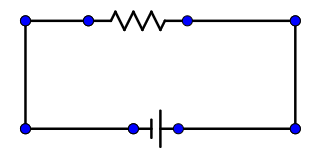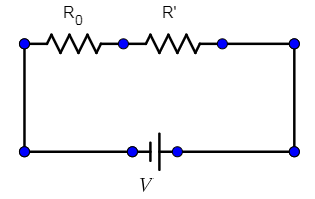Question
Question: To decrease the range of an ammeter, its resistance needs to be increased. An ammeter has resistance...
To decrease the range of an ammeter, its resistance needs to be increased. An ammeter has resistance R0 and range I. Which of the following resistance can be connected in series with it to decrease its range to I/n?
A. nR0
B. (n−1)R0
C. (n+1)R0
D. None of these.
Solution
We need to find the resultant current when a resistor is connected in series. In a series circuit, the current is common. By applying the ohm’s law to the series circuit, we find the resistance.
Formula used:
Ohm’s law: When a potential difference of V volts is applied to a resistance R and I current flows through it the relationship of V and I can be written as:
V=IR
Complete answer:
An ammeter is a device which measures the amount of current in the circuit when it is connected in series. In an analog ammeter, we have a scale that goes from a minimum (usually 0 units) to a maximum value (says I in the question). Thus, the maximum value that our ammeter depicts is I (units) when it has a resistance of R0. Consider this circuit as equivalent to a situation when I am flowing through a resistance of R0 when a battery of V volts is connected.

V=IR0
We need to find a resistance to be attached in series with this resistance R0 so that the current reduces to I/n in the circuit (we still use our V volts supply). So now, the battery of ours has to give current to two resistances R and R’:

V=nI (R0 +R’)
Thus, we must equate the V in both circuits to get our value of R’:
IR0=nI (R0 +R’)
R0 -n1 R0 =nR’
This gives,
(n-1) R0 =R’
So, the correct answer is “Option D”.
Note:
An ammeter is connected in series in a circuit so the resistance it has is accounted for in series in the circuit whereas if there were a voltmeter, it would have had a resistance in parallel with the circuit, across some other resistance.
